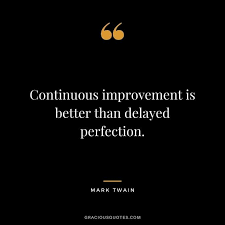Mind-body connection therapy, also known as mind-body medicine, is a form of therapy that focuses on the connection between our thoughts, emotions, and physical health. This approach recognizes that our mental and emotional states can have a significant impact on our physical well-being.
The mind-body connection has been studied for centuries, but it wasn’t until the 20th century that scientists began to fully understand the complex relationship between our thoughts, emotions, and physical health. Today, there is a growing body of research supporting the effectiveness of mind-body connection therapy in treating a wide range of conditions.
One of the most well-known forms of mind-body connection therapy is meditation. Meditation has been shown to reduce stress and anxiety, lower blood pressure and improve sleep quality. It can also help individuals manage chronic pain and reduce symptoms associated with depression and anxiety disorders.
Another form of mind-body connection therapy is biofeedback. Biofeedback involves using sensors to monitor specific bodily functions such as heart rate or muscle tension. The individual then uses this information to learn how to control these functions through relaxation techniques or other methods.
Acupuncture is another form of mind-body connection therapy that has been used for thousands of years in traditional Chinese medicine. Acupuncture involves inserting thin needles into specific points on the body to stimulate energy flow and promote healing.
Other forms of mind-body connection therapy include yoga, tai chi, hypnotherapy, guided imagery, and cognitive-behavioral therapy (CBT). CBT is a type of talk therapy that helps individuals identify negative thought patterns and develop more positive ways of thinking.
Mind-body connection therapy is often used in conjunction with traditional medical treatments for conditions such as chronic pain, cancer treatment side effects, cardiovascular disease, and autoimmune disorders. It can also be used as a standalone treatment for mental health issues such as anxiety disorders or depression.
Overall, mind-body connection therapy offers individuals an alternative approach to conventional medical treatments by recognizing the interconnectedness of our mental and physical health. By addressing both aspects of our well-being, mind-body connection therapy can help individuals achieve a greater sense of balance and overall wellness.
9 Tips for Cultivating a Strong Mind-Body Connection through Therapy
- Practice mindful breathing
- Connect with nature
- Exercise regularly
- Eat mindfully
- Get enough sleep
- Practice yoga or tai chi
- Use visualization techniques
- Participate in group activities
- Journaling
Practice mindful breathing
Mindful breathing is a simple yet powerful technique that can help individuals improve their mind-body connection and reduce stress. The practice involves focusing your attention on your breath and noticing how it feels as you inhale and exhale.
To practice mindful breathing, find a quiet place where you won’t be disturbed. Sit in a comfortable position with your back straight and your feet flat on the ground. Close your eyes or soften your gaze, and take a few deep breaths to help you relax.
Next, focus your attention on the sensation of your breath as it enters and leaves your body. Notice how it feels as the air moves in through your nose or mouth, down into your lungs, and back out again. You may also notice the rise and fall of your chest or belly as you breathe.
If your mind starts to wander, gently bring it back to the sensation of your breath. Don’t judge yourself for getting distracted; this is normal! Simply acknowledge the thought or feeling that pulled you away, then let it go and return to focusing on your breath.
Practicing mindful breathing for just a few minutes each day can have significant benefits for both mental and physical health. It can help reduce stress, lower blood pressure, improve sleep quality, and promote feelings of calmness and relaxation.
Incorporating mindful breathing into daily life doesn’t have to be complicated or time-consuming. You can practice while waiting in line at the grocery store, during a break at work, or even while brushing your teeth. With regular practice, mindful breathing can become a natural part of daily life, helping you stay grounded and connected to both mind and body.
Connect with nature
Connecting with nature is a simple yet powerful way to enhance the mind-body connection and improve overall well-being. Spending time in nature has been shown to reduce stress and anxiety, improve mood, and boost cognitive function.
Research has found that spending time in green spaces can help reduce cortisol, the hormone associated with stress. Being surrounded by nature can also promote relaxation and a sense of calmness, which can be particularly helpful for individuals dealing with anxiety or depression.
In addition to reducing stress, connecting with nature can also improve physical health. Studies have shown that spending time in green spaces can lower blood pressure, reduce inflammation, and boost the immune system.
There are many ways to connect with nature, even if you live in an urban area. Taking a walk in a park or along a tree-lined street can be a great way to get some fresh air and enjoy the outdoors. If you have access to hiking trails or other natural areas, consider taking a hike or going for a bike ride.
Gardening is another great way to connect with nature. Whether you have space for a small container garden on your balcony or a larger plot of land in your backyard, gardening allows you to connect with the natural world while also getting some exercise and fresh air.
If you’re feeling stressed or overwhelmed, take some time to connect with nature today. Even just 15-20 minutes spent outside can help clear your mind and improve your overall well-being.
Exercise regularly
Exercise is an essential component of mind-body connection therapy. Regular exercise has been shown to have a positive impact on both our physical and mental health. Exercise releases endorphins, which are natural mood boosters that can help reduce stress and anxiety.
In addition to its mood-boosting benefits, exercise can also improve cardiovascular health, strengthen muscles and bones, and help with weight management. Exercise has also been shown to improve cognitive function, including memory and attention span.
When it comes to mind-body connection therapy, exercise is an effective way to connect the body and mind. By focusing on the physical sensations of movement during exercise, we can quiet our minds and become more present in the moment. This mindfulness practice can help reduce stress levels and improve overall well-being.
It’s important to find a type of exercise that you enjoy so that you are more likely to stick with it long term. Whether it’s running, yoga, swimming or weightlifting, there are many different types of exercises that can provide both physical and mental benefits.
To get started with regular exercise as part of your mind-body connection therapy routine, start small and gradually increase your activity level over time. Aim for at least 30 minutes of moderate-intensity exercise most days of the week. Remember to listen to your body and rest when needed.
In conclusion, regular exercise is an important aspect of mind-body connection therapy that can have significant benefits for both our physical and mental health. By incorporating regular exercise into your routine, you can reap the many benefits of this powerful practice.
Eat mindfully
Eating mindfully is a simple but powerful tip for improving your overall well-being through mind-body connection therapy. Mindful eating involves paying attention to the sensory experience of eating, including the taste, texture, and smell of food, as well as your body’s hunger and fullness cues.
By eating mindfully, you can reduce stress and anxiety related to food choices and improve your relationship with food. Mindful eating also helps you make healthier choices by tuning into your body’s needs and avoiding overeating or emotional eating.
To practice mindful eating, start by slowing down and savoring each bite of food. Take time to appreciate the flavors and textures of your meal. Avoid distractions such as phones or TV while you eat so that you can fully focus on the experience.
Pay attention to your body’s hunger and fullness cues. Eat when you are hungry and stop when you are comfortably full. This can help prevent overeating or undereating.
Finally, try to approach food without judgment or guilt. Instead of labeling foods as “good” or “bad,” focus on how they make you feel physically and emotionally. This can help reduce stress related to food choices and promote a more positive relationship with food.
Incorporating mindful eating into your daily routine is a simple but effective way to improve your overall well-being through mind-body connection therapy. By tuning into your body’s needs and fully experiencing the sensory aspects of eating, you can reduce stress, improve digestion, and promote a healthier relationship with food.
Get enough sleep
Getting enough sleep is a crucial part of mind-body connection therapy. Sleep plays a vital role in our physical and mental health, and lack of sleep can have a significant impact on our overall well-being.
During sleep, our bodies repair and regenerate tissues, produce important hormones, and consolidate memories. Lack of sleep can lead to fatigue, reduced concentration, and decreased cognitive function. It can also weaken the immune system, increase the risk of chronic diseases such as diabetes and heart disease, and even contribute to mental health issues such as anxiety and depression.
In mind-body connection therapy, getting enough sleep is essential because it directly affects our emotional state. Lack of sleep can contribute to feelings of stress, anxiety, and irritability. It can also make it more difficult to manage emotions effectively.
To ensure you are getting enough sleep for optimal mind-body wellness, it’s important to establish good sleep habits. This includes setting a regular bedtime and wake-up time, avoiding caffeine and alcohol before bed, creating a comfortable sleeping environment that is dark and quiet, and limiting screen time before bed.
If you have trouble sleeping or suffer from insomnia, there are several techniques that can be used in mind-body connection therapy to promote better sleep habits. These include relaxation techniques such as meditation or deep breathing exercises, cognitive-behavioral therapy (CBT), hypnotherapy or biofeedback.
In conclusion, getting enough sleep is essential for optimal mind-body wellness. By establishing good sleep habits and incorporating techniques from mind-body connection therapy into your routine, you can improve your overall well-being by promoting better physical health as well as emotional balance.
Practice yoga or tai chi
If you’re looking for a way to improve your mind-body connection, practicing yoga or tai chi may be just what you need. Both of these practices incorporate movement, breathwork, and meditation, which can help you become more aware of your body and its sensations.
Yoga is a practice that originated in ancient India and has become increasingly popular in the West. It involves a series of postures or poses, combined with breathing techniques and meditation. Yoga has been shown to reduce stress and anxiety, improve flexibility and balance, and promote overall physical fitness.
Tai chi is another ancient practice that originated in China. It involves slow, deliberate movements that are synchronized with deep breathing and relaxation techniques. Tai chi has been shown to reduce stress, improve balance and coordination, and promote overall physical health.
Both yoga and tai chi can help you develop a deeper sense of mindfulness by focusing your attention on the present moment. This can help you become more aware of your thoughts, emotions, and bodily sensations. By practicing regularly, you may begin to notice improvements in your mental clarity, emotional well-being, and physical health.
Incorporating yoga or tai chi into your daily routine doesn’t have to be complicated or time-consuming. Even just 10-15 minutes per day can make a significant difference in how you feel. There are many resources available online or in-person classes that can help you get started.
Overall, practicing yoga or tai chi is an excellent way to improve your mind-body connection. By incorporating movement, breathwork, and meditation into your daily routine, you may begin to notice improvements in both your mental and physical health.
Use visualization techniques
Visualization techniques are a powerful tool in mind-body connection therapy that can help individuals achieve their goals and improve their overall well-being. Visualization involves using mental imagery to create a positive outcome or experience in the mind.
One common visualization technique is called guided imagery. This technique involves creating a mental image of a peaceful, calming place such as a beach or forest. The individual then focuses on this image, imagining themselves in this peaceful environment and experiencing the sensations of relaxation and calmness.
Another visualization technique is called future self-visualization. This technique involves creating a mental image of oneself achieving a specific goal or desired outcome. For example, an individual who wants to quit smoking may visualize themselves as a non-smoker, breathing easily and feeling healthier.
Visualization can also be used to reduce stress and anxiety. By imagining oneself in a calm, relaxing environment, individuals can reduce feelings of stress and anxiety and promote feelings of relaxation.
Research has shown that visualization techniques can have real physical effects on the body. For example, athletes have been known to use visualization techniques to improve their performance by mentally rehearsing their actions before competing.
Overall, visualization techniques are an effective tool for promoting positive outcomes and improving overall well-being. By using the power of the mind to create positive mental images, individuals can achieve their goals and reduce feelings of stress and anxiety.
Participate in group activities
Participating in group activities can be a powerful tool for improving your mental and physical health through mind-body connection therapy. Group activities such as yoga, dance, or team sports not only provide physical exercise but also offer social support and a sense of community.
Research has shown that participating in group activities can reduce stress, anxiety, and depression while improving mood and overall well-being. This is because group activities provide a sense of belonging and social connectedness, which can help combat feelings of isolation or loneliness.
In addition to the social benefits, group activities can also be an effective way to practice mindfulness and focus on the present moment. For example, in a yoga class, participants are encouraged to focus on their breath and movements, which helps quiet the mind and reduce stress.
Group activities can also be beneficial for individuals with chronic pain or other health conditions. By participating in low-impact group exercises such as tai chi or water aerobics, individuals can improve their physical health while also receiving emotional support from others going through similar experiences.
Overall, participating in group activities is an excellent way to incorporate mind-body connection therapy into your daily routine. Whether it’s joining a local sports team or attending a meditation class, finding ways to connect with others while focusing on your mental and physical health can lead to significant improvements in overall well-being.
Journaling
Journaling is a simple yet powerful tool that can be used as a form of mind-body connection therapy. By writing down our thoughts and emotions, we can gain a deeper understanding of our mental and emotional states, which can in turn have a positive impact on our physical health.
Research has shown that journaling can help reduce symptoms of anxiety and depression, improve sleep quality, and even boost the immune system. This is because journaling allows us to process and release negative emotions, which can otherwise build up and lead to physical tension or illness.
To get started with journaling, all you need is a pen and paper (or a digital equivalent). Set aside some time each day to write down your thoughts and feelings. You might choose to write about specific events or experiences that are causing you stress or anxiety, or simply jot down whatever comes to mind.
The key is to be honest with yourself and not worry about grammar or spelling. This isn’t an assignment for school – it’s an opportunity for you to connect with yourself on a deeper level.
If you’re not sure where to start, try using prompts such as “Today I feel…” or “I’m grateful for…”. You might also consider setting intentions for the day ahead or reflecting on positive experiences from the past.
Over time, you may find that journaling becomes an important part of your self-care routine. By taking the time to connect with your thoughts and emotions each day, you’ll be better equipped to manage stress, improve your mental health, and cultivate greater overall well-being.




